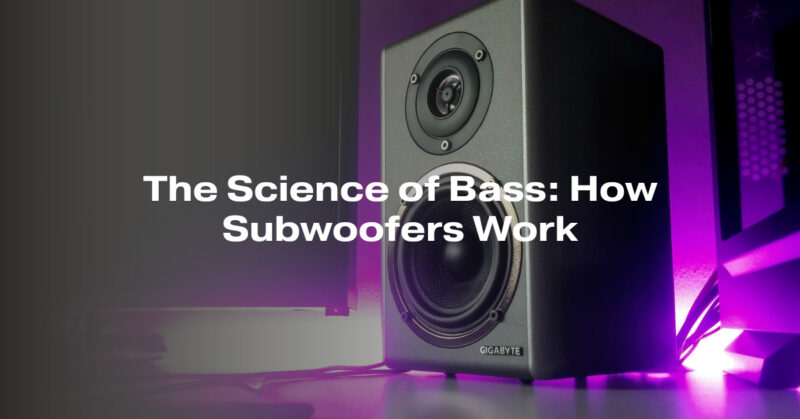Subwoofers are specialized loudspeakers designed to reproduce low-frequency sound waves, commonly known as bass frequencies. Understanding how subwoofers work involves delving into the science of sound, particularly the physics of low-frequency sound reproduction. Here’s an overview of the science behind subwoofers:
1. Sound Waves:
- Sound is a series of compressions and rarefactions (changes in air pressure) that propagate through a medium, usually air. These pressure fluctuations create the perception of sound when they reach our ears.
2. Frequency and Wavelength:
- Sound is characterized by its frequency, which is measured in Hertz (Hz). Frequency represents how many cycles (compressions and rarefactions) occur per second. Bass frequencies typically range from 20 Hz to 200 Hz or lower.
- The wavelength of a sound wave is inversely proportional to its frequency, meaning lower frequencies have longer wavelengths.
3. Loudspeaker Transducers:
- Loudspeakers, including subwoofers, are transducers that convert electrical signals into sound waves. They consist of a diaphragm (usually a cone or a driver) attached to a coil of wire (voice coil) that moves within a magnetic field.
- When an electrical audio signal is applied to the voice coil, it moves back and forth rapidly, causing the diaphragm to vibrate and produce sound waves.
4. Subwoofer Design:
- Subwoofers are designed to excel at reproducing low-frequency sound. They typically feature larger diaphragms (woofers) and are housed in specially designed enclosures.
- The enclosure can be sealed (acoustic suspension), ported (bass reflex), or employ other designs like bandpass or transmission line, each with specific acoustic characteristics.
5. Bass Amplification:
- Subwoofers are often powered by amplifiers, either external or built into the subwoofer itself. The amplifier provides the necessary electrical energy to move the voice coil and diaphragm, creating the required air pressure changes for bass reproduction.
6. Acoustic Principles:
- Low-frequency sound waves have long wavelengths that are difficult for conventional speakers to reproduce accurately. Subwoofers excel in handling these long wavelengths.
- The enclosure design, driver size, and amplifier power are crucial factors in a subwoofer’s ability to generate deep and powerful bass.
7. Crossover Networks:
- In many audio systems, a crossover network is used to direct bass frequencies to the subwoofer and higher frequencies to other speakers (such as tweeters and midrange drivers).
- Crossovers ensure that each type of speaker reproduces the frequencies it’s best suited for, resulting in a balanced sound.
8. Room Acoustics:
- The acoustics of the room in which a subwoofer is placed can significantly affect its performance. Room size, shape, and the materials used in the room can lead to standing waves, resonances, and acoustic anomalies that impact bass reproduction.
9. Equalization:
- Some subwoofers and audio systems include equalization (EQ) controls to adjust the subwoofer’s response to compensate for room acoustics and achieve a more balanced bass output.
In summary, subwoofers work by using specialized components and enclosure designs to reproduce low-frequency sound waves accurately. They excel at handling the long wavelengths associated with bass frequencies, providing a rich and powerful audio experience for music and home theater systems. Properly integrating and setting up a subwoofer in a room is essential to achieve the best bass performance.


